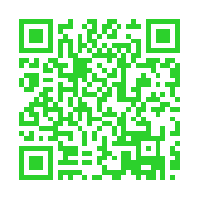You have probably heard about QR codes by now, and seen them in your mailbox on the weekend when the sales flyers are delivered. If you have never heard of them (possibly if you don’t have a smart phone) you can read up about it in wikipedia: http://en.wikipedia.org/wiki/QR_Code
Although I like to add them to course handouts, other teachers often ask me sceptically, do you really want to put add the QR code? Why?
Well, blended learning is becoming more and more popular – and necessary to meet varied learning styles, and to demonstrate a little tech savvy 🙂 This means the teacher often includes online content in their class lesson. It might be a video, or a website, or photos from Flickr, or other interesting stuff.
Well, perhaps not everyone can see the video clearly, or you have 28 students and only 25 computers, or some students might like to re-watch the video later. Or you set it as a task in preparation for the next lesson.
If you include a QR code in your class handout on the discussion, they can scan the image and be taken directly to the website.
For example,
I have a sustainability class and we are talking about State legislation and compliance. I want them all to go to this website and in a group select an activity that requires a permit, and in 10 mins tell the rest of the class what has to be done to get this permit.
The website address is http://www.derm.qld.gov.au/services_resources/category.php?class_id=10
Now, do I write this long url on the board for them to copy into their browser? Then help them type it correctly?
No, I include the QR code on the class handout 🙂 I even have them on the e-learning content, because some students like to multitask, and they will scan the code for the YouTube video and watch that as well as continuing with the rest of the online text.
If I am really clever I might have a couple of handouts that have different QR codes (say one for each State in Australia’s environmental compliance department), but not describe which State the QR code links to. Then nominate a common permit and they can research it for a State based on the code they are given. We can then compare any differences for this permit as a class.








